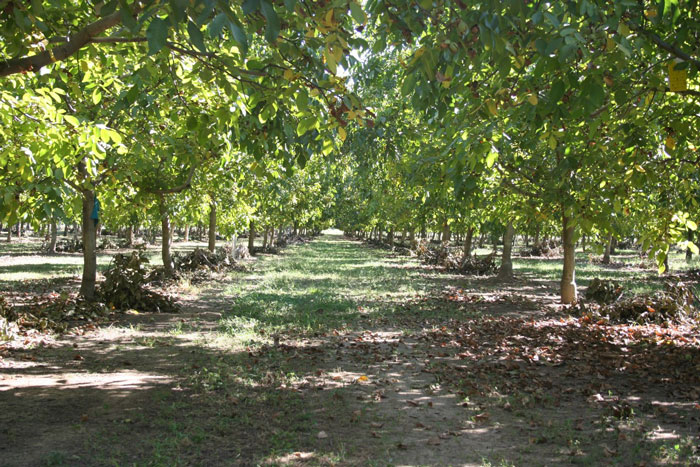
Rachel Long, a UC farm advisor in Yolo, Solano and Sacramento Counties, has been researching bats for 25 years, and she says the values of bats in all agricultural pest control probably exceeds billions of dollars per year, according to recent studies. But very little data exists on the benefits for specific crops, such as walnuts.
August 19, 2015

Researchers with the University of California are trying to put numbers behind the dollar signs that growers of walnuts use when they tally the value of having bats cruise their orchards, eating pests that include their enemy No. 1 – the codling moth.
It’s known the bats are voracious predators of night-flying insects that target walnuts and other crops, and growers have been putting bat houses into or near their orchards for years.
Rachel Long, a UC farm advisor in Yolo, Solano and Sacramento Counties, has been researching bats for 25 years, and she says the values of bats in all agricultural pest control probably exceeds billions of dollars per year, according to recent studies. But very little data exists on the benefits for specific crops, such as walnuts.
That’s why she and colleagues, who include Kate Ingram, a doctoral candidate with the Department of Wildlife, Fish and Conservation Biology at UC Davis, are seeking to quantify just how many codling moths the bats consume.
Ingram is doing that by looking for what she calls “glorified poo in a bag,” trapping bats, letting them defecate, then examining their guano for codling moth DNA.
She’s doing that in 16 walnut orchards, half of them organic, in Yolo and Solano Counties.
“Questions I’m trying to resolve are which species are using orchards to forage,” Ingram said, “and what is the amount of codling moths they are eating. We want to build an economic model to show how much bats are saving farmers.”
To catch the bats, she uses a fine mesh net so that they are not harmed. She determines the bat’s sex, weight and species, collects the guano and releases the bat.
To find bats, she uses a Pettersson recorder that can pick up bat calls within a 10-meter radius. A software program called Sonibat helps to analyze recordings and determine which species are foraging.
Ingram said she expects to complete her project in the summer of 2016. The research is funded by a grant from the U.S. Environmental Protection Agency STAR (Science to Achieve Results).
One of the orchards she is studying is near Winters. It’s a family-owned organic enterprise where Craig McNamara says he has about 10 bat boxes.
He began using the boxes 15 years ago and is a believer that the bats are an important part of pest control. But he does not see them as the only means to do that.
“It’s important to have a multi-faceted approach to pest control,” he said. “It builds resiliency. You also need a vigorous growing tree and rich soil. I don’t think bats will replace mating disruption with pheromones. Those will continue to be used as they have for decades.”
California produces almost all of the nation’s walnuts. The state’s farmers grow some 500,000 tons of walnuts on 290,000 acres with an annual crop value of $1.8 billion.
Damage from codling moths can result in walnuts being downgraded resulting in financial losses. The codling moth larva feed on developing nuts. The adult moths begin to fly and lay eggs on the nutlets in May and produce up to four generations per year.
To manage the moth, growers spray once or twice a year and use mating disruption. Pesticides can cost some walnut growers around $160 per acre for each application.
Based on calculations resulting from preliminary data, researchers say that for a typical 80-acre walnut orchard production of a total of 136 tons of walnuts per year, it’s estimated that bats can protect about 6 percent of the crop yield, or $29,700 worth of walnuts per season at the current price of $1.65 per pound.
That would mean an economic value of $10 per bat per year. And researchers suspect that underestimates the true value. One pregnant bat can eat up to two thirds of her body weight in insects a night.
Researchers have also conducted a survey of growers to determine how they view birds and bats as biological controls of pests – or nuisances. The response from 122 respondents in the Sacramento Valley was “positive,” said Sara Cross, a research fellow at UC Davis.
Cross, an ornithologist, said she is working with two social scientists and expects to release a report related to that survey within a few months.
In addition to her research on the economic effects of bats in walnut orchards, UC’s Long is wrapping up a third and final book in a Black Rock Desert trilogy that centers on 10-year-old Jack and his interaction with wildlife friends that include Pinta the pallid bat. Her first book in the trilogy, Gold Fever, was published in 2012. The second is Valley of Fire.
About the Author(s)
You May Also Like



